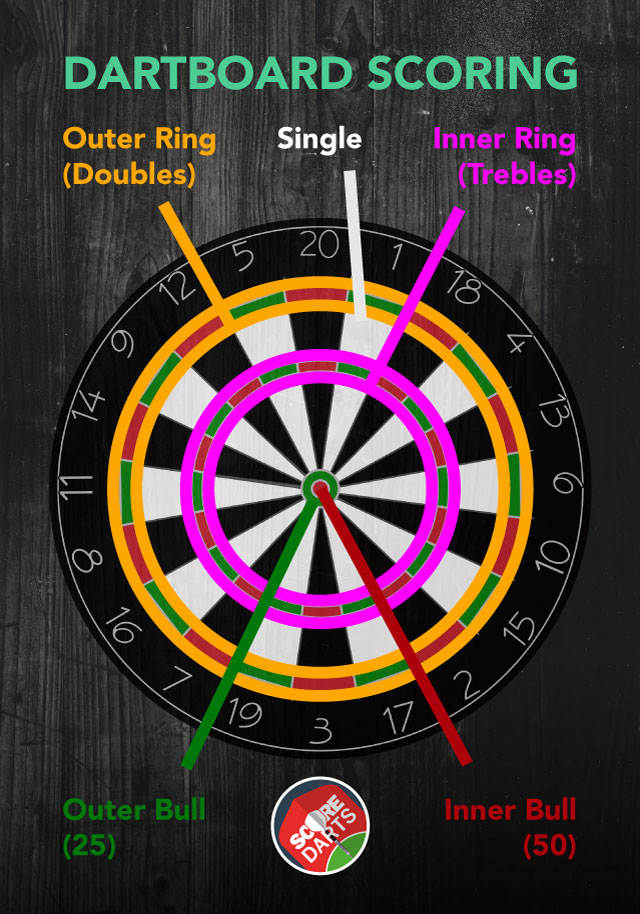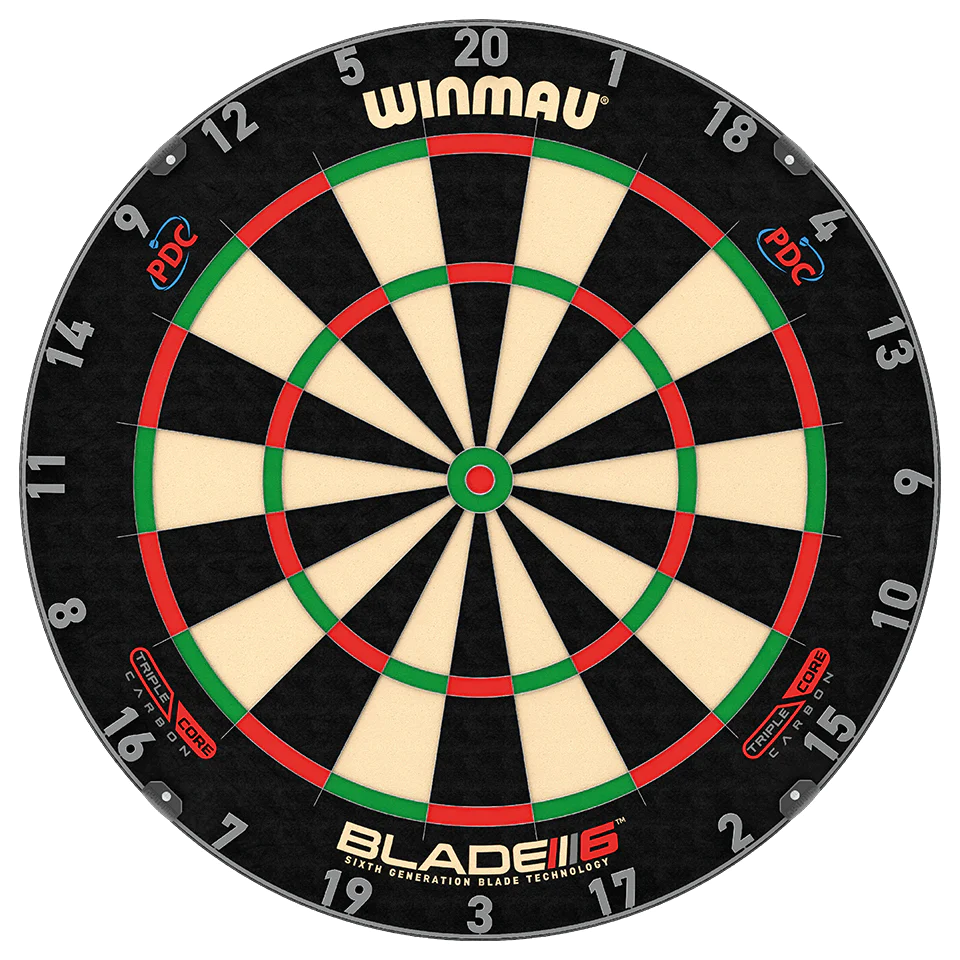To play darts, players take turns throwing small missiles at a circular target known as a dartboard. Each player aims to hit specific sections to score points.
Darts is a classic game that combines skill, precision, and a bit of competition. Often played in social settings like pubs or game rooms, this sport has simple rules that can be quickly learned by players of any skill level.
Whether you’re enjoying a casual game or participating in a more formal competition, the objective remains the same: score points by hitting marked areas on the dartboard. A standard dartboard is divided into twenty segments, each with its own point value, and includes a bullseye in the center. The excitement of darts comes from the challenge of consistently hitting the high-scoring areas and outmaneuvering your opponents. With a few darts in hand and a clear understanding of the rules, anyone can participate in this timeless activity, honing their aim and enjoying the thrill of competition.
Introduction To Darts
Darts is a game with a rich legacy, tracing back to medieval England. Soldiers first played it to hone their throwing skills. The game evolved into a pub sport. Today, it is a global phenomenon, enjoying popularity across continents.
People worldwide watch major dart competitions. Many also play casually in homes and bars. The game’s simple premise and variable skill levels make it accessible to all. Whether as a hobby or a professional pursuit, darts connects people far and wide.
Essential Equipment
Playing darts requires specific equipment for the best experience. Selecting the right darts is crucial. Darts vary in weight, grip, and material. Beginners should try different styles to find what suits them. Steel-tip darts are common for traditional boards, while soft-tip darts work with electronic boards.
Dartboards come in two primary types: bristle and electronic. Bristle boards, made of sisal fibers, are used for steel-tip darts. They are durable and self-healing. Electronic boards, on the other hand, are for soft-tip darts. They often feature automatic scoring.
| Type of Dartboard | Material | Dart Type |
|---|---|---|
| Bristle | Sisal fibers | Steel-tip |
| Electronic | Various plastics | Soft-tip |
Understanding The Dartboard
The dartboard is a key part of playing darts. It has different scoring zones. The outer ring scores double points. The ring inside it scores triple points. Darts in these areas help players score big!
The bullseye is the center of the board. It is the most important spot. The small inner circle scores 50 points. The outer circle scores 25 points. Good aim here can win games!
Basic Rules And Scoring
Darts is a fun game with simple rules. Players take turns throwing three darts each. The aim is to reduce a fixed score to zero. The most common games start from 501 or 301.
Hitting different sections of the board scores different points. The outer ring scores double points; the inner ring scores triple. Hitting the ‘bullseye’ scores 50 points. The outer bullseye ring scores 25 points.
To win a ‘leg’, you must reach exactly zero points. The final dart must land in a double or the bullseye. A ‘set’ usually consists of three to five legs. The first to win the set count wins the game.
Stance And Grip Techniques
Finding your stance in darts is key to your game. Stand with your dominant foot slightly forward. Your body should be steady and angled to the dartboard. Keep your feet shoulder-width apart for balance. A consistent stance leads to better aim and precision.
Mastering your grip involves holding the dart lightly but firmly. Place your thumb and at least two fingers on the dart. Don’t squeeze too hard; tension can throw off your aim. Each player’s grip is unique, so experiment to find what works for you. A relaxed grip will improve control and accuracy.
The Art Of The Throw
The art of throwing darts requires precise aiming strategies and understanding the throwing mechanics. To master aiming, align your dominant eye with the dart and target. Stand with your dominant foot slightly forward. Concentration on the target is critical, and ensure your body is steady.
Let’s talk about throwing mechanics. Keep your elbow fixed at a 90-degree angle. Execute the throw with a smooth, consistent arm movement. Release the dart with a firm flick of the wrist. Your fingers should let go of the dart at the end of the throw. Remember, practice makes perfect.
Practice Routines And Drills
Playing darts involves precision, control, and strategy. Solo exercises are a great way to improve. Start with the ‘Around the World’ drill. Aim to hit each number on the board in sequence. Focus on consistency and, importantly, your throwing stance. Oche line practice is crucial, too. Place a marker on the floor. Stand behind it and throw to maintain a steady aim. This improves your muscle memory.
For group training games, ‘Chase the Dragon’ is fun. Players need to hit certain targets in order. It ignites friendly competition. Another game is ‘Horse’. Miss a target and earn a letter. First to spell ‘HORSE’ loses. These games boost skill while you enjoy time with friends. Always remember, the goal is consistent improvement and enjoyment of the game.

Credit: us.amazon.com
Advanced Tips And Tricks
Mental preparation is key to mastering darts. Deep breathing helps calm nerves. Visualizing the dart hitting the board improves aim and focus. Confidence is crucial, so foster a positive mindset. Practice consistency in your throwing routine to build muscle memory. Even under pressure, stay cool and collected.
Strategic plays involve knowledge of dart math. Understanding outcharts is essential for finishing a game. Aim at high scoring triples to reduce your score quickly. Use doubles wisely for game-winning shots. Remember, strategic targeting is better than random throws. Knowing common outcharts by heart gives a competitive edge. Keep practicing different checkout scenarios.
| Score | Triple | Double | Checkout |
|---|---|---|---|
| 170 | 20 | 18 | Bull |
| 161 | 20 | 17 | Bull |
| Checkout Strategies | Memorize common patterns and combinations. | ||
Dart Games Variations
Exploring the world of darts reveals a rich variety of games. Many prefer the classic ‘501’, where players start with a score of 501 and race to reduce it to zero. Others enjoy ‘Cricket’, a game focusing on hitting certain areas of the board to ‘close out’ numbers and beat opponents.
For modern twists, ‘Around the World’ is fun. Players must hit each number in sequence to advance. Custom practice variations are also popular, as they help sharpen skills. Try ‘Bob’s 27’ for a challenging doubles practice or ‘Fives’ for an engaging way to work on hitting those tricky numbers divisible by five.
- Classic ‘501’: Race to zero from 501.
- ‘Cricket’: Close out numbers to win.
- ‘Around the World’: Hit numbers in order.
- ‘Bob’s 27’: Doubles practice game.
- ‘Fives’: Score in multiples of five.
Safety And Etiquette
Always stay aware of your surroundings in darts. This means knowing who’s near you. Throwing sharp objects like darts is serious, and mishandling them can be dangerous.
Keep darts pointed downwards when not throwing. Make sure the playing area is clear before you toss a dart. Never throw darts in anger or in jest towards persons.
Playing darts is also about respectful competition. Show good sportsmanship by congratulating others on a good throw. Don’t shout or distract someone who is throwing. Wait for your turn patiently and cheer others on. This makes the game fun for everyone.
Joining A League
Joining a local darts league can be a thrilling way to enjoy the game. You can meet new people who share your passion. To find a league near you, check at nearby pubs or community centers that host games. These places often have teams seeking new members. Don’t forget to look online for local darts forums or social media groups; these can be great resources.
Many leagues offer different levels of play, from beginner to expert. This means everyone can join in on the fun. Once you’re part of a league, you’ll have the chance to play in regular matches and tournaments. This can help improve your skills. Stay committed and you might even win a trophy!

Credit: www.shotdarts.com
Maintaining Your Equipment
Maintaining your darts is key for top performance. Keep dart tips sharp for precision. Flights should lie flat without bends. Barrels require a regular clean for a steady grip.
Check your gear often for wear and tear. Replace parts that look worn out. Flights and shafts need changing more often. This keeps your darts flying straight. A worn tip can ruin your game.
Don’t wait too long to get new gear. Fresh equipment can improve your scores. Remember to practice with new gear before playing.

Credit: www.scoredarts.com
Conclusion
Dart-throwing is both an art and a science. Mastering it brings endless fun and a sense of accomplishment. Remember, practice is key, and with the tips shared, you’re on the right path. So grab your darts, aim for the bullseye, and let the games begin.
Game on, sharpshooters!





